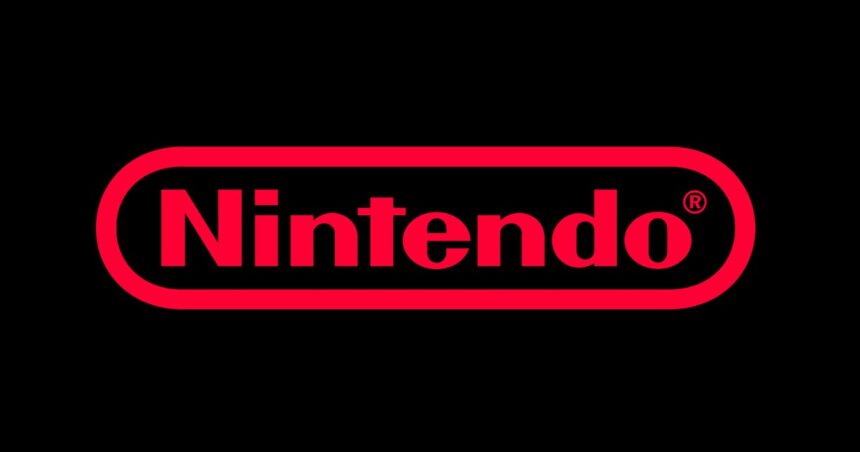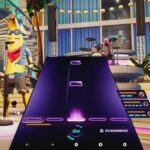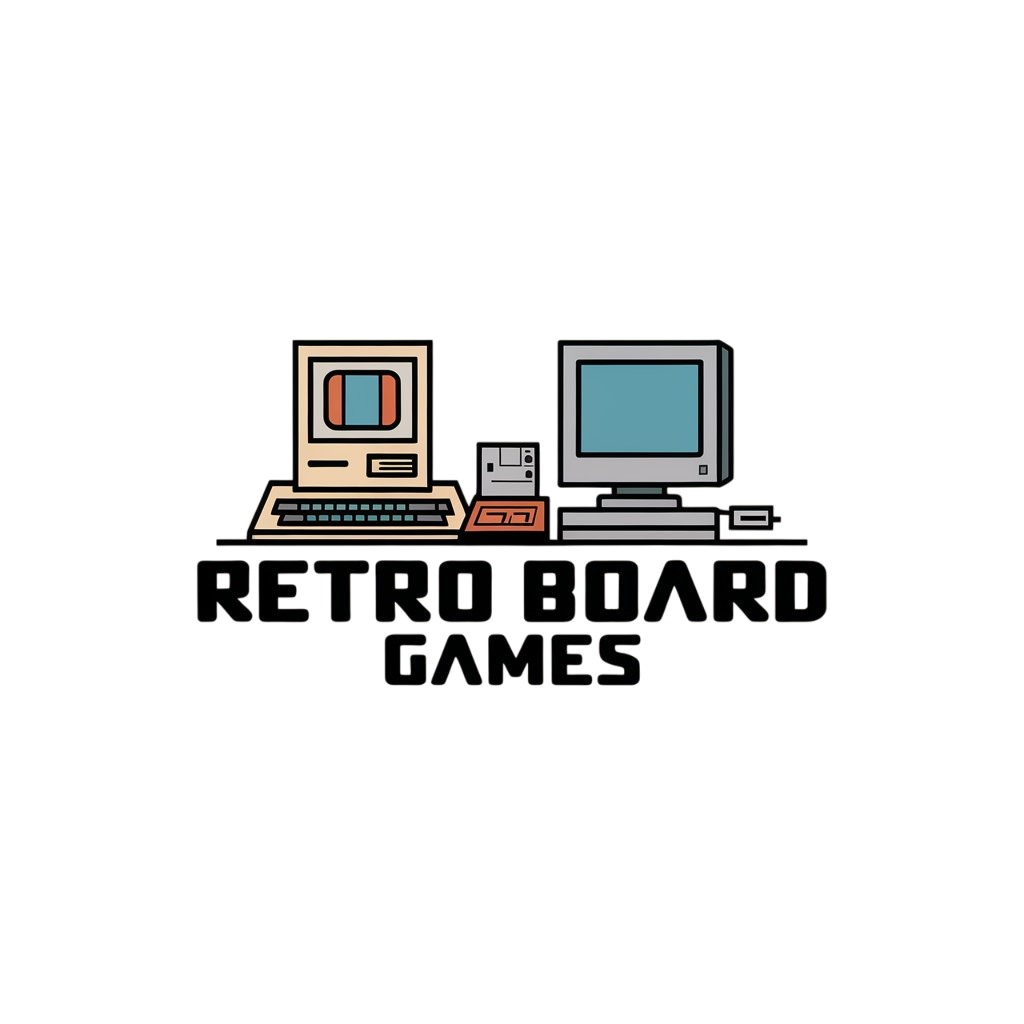It’s that most thrilling time, the dawn of a new hardware generation. It’s gaming Christmas! As a critic, that means it’s time for that finest tradition – an intense period of bedding in with a new piece of hardware, vigorously road-testing it so that we can inform you, our delightful readers, if this thrilling new piece of tech is worth your money.
But this isn’t a Nintendo Switch 2 review, for reasons that will become clear. The new hardware that I’ve been testing is Nintendo’s other controversially expensive handheld – the Virtual Boy.
I know, I know. The Virtual Boy isn’t new. In a little over a month’s time it’ll be 25 years old, in fact. Nintendo’s greatest swing and miss, the Virtual Boy holds the dubious honor of being a console discontinued within a year of its release. Well under 1,000,000 units were sold. For comparison’s sake, The N-Gage sold 3,000,000. 3,000,000 side-talkers! I’m getting sidetracked.
All of that probably speaks to why I, an incorrigible retro game anorak, had never owned one. Hell, I’d never played one. The closest I’d ever come is peering into a Virtual Boy demo station at the Nintendo Museum – which in a bizarre twist is actually a Nintendo Switch with some goggles grafted on, emulating the VB’s best.
As you have doubtless intuited – well done you – all of that is no longer the case. I bought one. Truth be told, I got a phone call from a media relations representative who gingerly informed me that Nintendo would not be bequeathing media with units of the Nintendo Switch 2 well in advance of launch. There will, therefore, be no Eurogamer review of the Switch 2 this side of launch day. As someone who had blocked out his work calendar to ensure I had maximum time to indulge in the Switch 2 and its 22 launch games, I was left at a bit of a loss. That number stuck in my head though. 22. Some other machine had that many games…
Nintendo’s news delivered late on a Friday, I shortly thereafter was in the pub. After a few too many pints, I went on an auction site and dropped way more money than I’m comfortable admitting on the only Nintendo machine I’ve never owned, as well as the majority of its 22 released games. So you’re getting a review: just probably not the one you were expecting.

The Virtual Boy is… kind of alright, actually? That’s my big, bold take-away. The echo chamber of video game urban legends, fed by ancient op-eds and videos where it’s decried as one of the worst things ever made hadn’t quite prepared me for the fact that… yeah, it is rough. But it’s also got that Nintendo touch. And some of the games are genuinely quite cool?!
The experiences vary from those heavily reliant on the Virtual Boy’s 3D effect and those that are more traditional games that are simply enhanced by it. I’d argue the latter games are the better ones. This isn’t immersive in the way that modern virtual reality is, primarily because – despite the name – this isn’t really virtual reality. You must adjust expectations accordingly. Really, the VB is a method of 3D display not dissimilar to the Nintendo 3DS – and its best games are designed around that.
Virtual Boy Wario Land, only the second in that now-beloved series, is a traditional platformer very reminiscent of the 1994 Game Boy original – but it milks the 3D for all its worth. Enemies swoop in and out from the back of the screen to the front; obstacles pirouette in and out of the play field in a manner designed to maximize the 3D impact. Those familiar with Nintendo’s recent output will likely have played a game which directly owes some of its design to VB Wario Land – for those neat little foreground-background sections of Donkey Kong Country Returns were directly inspired by the little-known title.

Mario’s Tennis is another gem for this – the ball flying towards you, the sense of depth used to help present a Tennis game from a slightly different perspective to what was common at the time, tilted down further behind the player character. One has to note also that with the first Mario Tennis (and therefore the first Mario Sports game) under its belt, the Virtual Boy had a more lasting impact on the pantheon of Nintendo franchises than the Wii U.
As an RPG nerd, I have to give a shout out to Jack Bros – a VB exclusive starring Jack Frost of Persona and Shin Megami Tensei fame. Red Alarm is a Star Fox-esque shooter which has great use of the 3D and brings the Tron vibes. Teleroboxer is Punch-Out!!!, but with robots and the fists flying towards you in three dimensions. I absolutely love Vertical Force, a lost Hudson Soft classic that uses the 3D layers to create a slightly different-feeling shmup. With two different Tetris titles, that means almost ten percent of the Virtual Boy’s library are versions of Alexey Pajitnov’s perfect game – and both of them are good. 3D Tetris is a bizarre and unique spin on the original concepts of Tetris, but it’s often quite difficult to tell what’s going on.
As I slot and pull carts, tabbing past the ‘this may destroy your eyesight’ warning each time, I’m quite stunned as I slowly realize that a lot of the ways the games use this technology are indeed deeply reminiscent of many Nintendo 3DS implementations. Just 16 years earlier and monochromatic.
Something that’s fascinating is how playing a real one makes clear that the Virtual Boy does not emulate well. Emulated, or in direct or camera-captured gameplay footage, everything just looks very, well… red. In-person, the lenses and screen design help to diffuse that crimson sea, giving lots of shades and perceptible layers. What I’m saying, really, is that it works a hell of a lot better in person than any YouTube video could ever suggest. But don’t take my word for it – let’s check in with the tech experts at Digital Foundry, who are also patiently twiddling thumbs waiting for a Switch 2 to test.

I hand you now to DF’s own John Linneman:
The Digital Foundry Verdict
If you’ve watched Digital Foundry over the past few years, you might be familiar with my undying devotion to the Cathode Ray Tube. CRT televisions provide a level of motion clarity that remains very difficult to achieve on flat panels. The experience is remarkable even today. So, what, you might be wondering, does this have to do with Virtual Boy? Well, it turns out, the unique display setup packed into the Virtual Boy has a special trick up its sleeve that I only understood when I purchased my own Virtual Boy in 2024.
You see, the dual oscillating mirror screens, targeting a resolution of 384×224 at 2 bits per pixel, are able to draw an image with a level of clarity that took me by surprise. It is, quite frankly, the closest thing I’ve seen to CRT-like motion clarity in a non-CRT display. As the red pixels dance across the screen, there isn’t even a slightly hint of trailing or persistence blur. It’s perfect. Vertical Force from Hudson and Nintendo’s own Virtual Boy Wario Land both showcase this perfectly. Curiously, the display itself is only updated at 50hz meaning games are 50 frames per second – much like the PAL TV standard. Yet, as a result of its design, this isn’t an issue in the slightest.
Alas, I suspect this motion clarity also ties into the (slightly) overblown focus on eye strain that people often joke about. “The Virtual Boy will give you headaches” they claim. Nintendo itself even reminds players to take a break every so often. So, what’s the deal? Well, as the system essentially draws the image line by line while using oscillating mirrors to transform a column of 224 red pixels into a full 384 wide image, this can create a subtle flicker to the eye that might bother those susceptible to eye strain. This is also the secret behind its motion clarity as it behaves similarly to an electron beam found within a CRT monitor.
Another unsung benefit of this design, however, is its ability to display its bright red pixels against a full pure black field. That is, since it’s not a backlit panel, the Virtual Boy can achieve perfect contrast leading to this sensation of being isolated within a completely dark space with red pixels dancing before your eyes. All of which would already be cool even without stereoscopic 3D but, that 3D effect, is central to the Virtual Boy experience and extremely effective.
By dividing up the two 3D images between two separate eyes, there is no crosstalk leading to an effectively perfect stereoscopic presentation. This is something only standalone head mounted displays can match, and the effect remains convincing to this very day. The 3D effect is dramatic and used to great effect to provide depth.
In addition, the system’s built-in speaker system is remarkable. The speakers are loud and distinct while producing a suitably 3D effect around the player. As you park your head into position, the title screen of Galactic Pinball will surround you, rattling your skull in the process. Speaking of Galactic Pinball, it’s worth noting that after completing the superlative Super Metroid, members of that development team went on to develop this new pinball game for Virtual Boy.
…and its that lineage specifically that really captivated me when playing Virtual Boy games. It feels as if we’ve been given a chance to experience an alternate future in which Nintendo opted to stick with 2D pixel art rather than going full 3D with Nintendo 64. You see, the more powerful VB hardware and higher resolution allowed those within Nintendo that touched it an opportunity to create sprites of a larger size, with more frames of animation than anything Nintendo had released before. It feels like Nintendo’s equivalent to Sega’s Saturn in that sense. A serious 2D powerhouse that remains as fast and playable as ever even decades later. Heck, thanks to the homebrew scene, we’ve even seen games such as Street Fighter II reborn on the Virtual Boy and it looks tremendous.
Sure, Virtual Boy has its issues, as discussed in this greater review, but it still manages to offer something truly unique within Nintendo’s history that cannot easily be enjoyed without smashing your own face against this gaudy red visor’s dual oscillating screens. If you have an opportunity to do so, I recommend experiencing it for yourself.
There you have it. Thanks, John. I’m amazed by how close it all feels to modern 3D, in a sense. Maybe it was ahead of its time after all! I can also note that in several multi-hour play sessions I never suffered the blazing headaches or migraines I’d heard about, though this is obviously deeply subjective. The only pain I had was back pain from stooping to fit into the headset – which is where my complaints begin.
Hindsight is 20/20 and all that, but it’s fair to say that amidst this surprisingly fun experience one can see the warning lights flashing. For a start, this is a ‘portable’ machine that is absolutely massive, and also gobbles six double-A batteries for just four hours of gameplay – Sega Game Gear territory. The portability argument collapses further because it for some reason has to be played at a table, on a stand – thus the pain as my intervertebral discs seemingly began to disintegrate as I played. There’s no headstrap available.
I was actually quite impressed by the clarity of the screens once I dialed it in to fit my eyes, and the crispness of the red-and-black monochrome display is good for a device of this age. Grainy capture always convinced me the display sucked, but aside from that whole red-and-black thing, it’s totally fine.
Awkwardly leaning over the table, holding one the ergonomically fine but too-heavy controller (thanks to the weight of the batteries, which go into the controller rather than the headset), well, one can see why this struggled. In all, it is a breathtakingly impractical device, and the argument that this is truly portable is perhaps Nintendo’s grandest folly of all time.
Arguably worst of all, you look like an absolute riddy playing it. That’s true of modern virtual reality too. In the last quarter decade we haven’t solved that problem.

Playing the Virtual Boy does bring to mind the grander history of Nintendo, too. When I was at the Nintendo Museum, I was quite surprised to see the Virtual Boy share a similar level of prideful merchandise as any other console. Now I own one, I get it: this is actually an indelible and important part of Nintendo’s history – even if it went awry. It therefore feels most appropriate at this time, the dawn of a new generation, to take in this great failure.
The funny thing is that having now played it extensively, in many ways I have quickly come to regard the Virtual Boy as a very similar level of failure as the Wii U. It was far more of a sales disaster, of course – but creatively the Virtual Boy has some strong technical ideas that get expressed very well in its games, even with such a limited library. You can see that very Nintendo focus of putting the games first working successfully. There’s good things done here that can never quite be replicated anywhere else – and there’s value to that. I will probably get my Virtual Boy out again way before I ever dig out the Wii U. That console may have been a lovely, well-rounded bit of hardware design when compared to the embarrassing looking two-tone toy that is the Virtual Boy – but it’s also bloody boring. The Virtual Boy is anything but; it’s a historical gem.
It also brings to mind Nintendo now: pilloried by some for releasing a machine that is essentially more of the same. I’ve argued this before, but Nintendo doesn’t need to do the new gimmick song-and-dance with every new machine to delight people. And sometimes such gimmicks are a fool’s errand anyway: we only have to look to those stumbles like the VB and Wii U to see that. It’s the grand science of being a platform holder – finding the right balance between the shouty and revelatory new features and just carrying on with what worked already – all while putting games at the forefront.
We’ll have to wait and see how well the Switch 2 sticks the landing when we can actually touch it outside of highly-confined preview events. That’ll be very soon, of course. By the time you read this, that process will likely have already begun. Whatever the result, it’s sure to be no Virtual Boy. But in a sense I’m thankful my Switch 2 review plans collapsed. As a result, I had a delightful history lesson.
A copy of the Virtual Boy was purchased by Alex, at his exorbitant expense, for review in lieu of the Switch 2.






